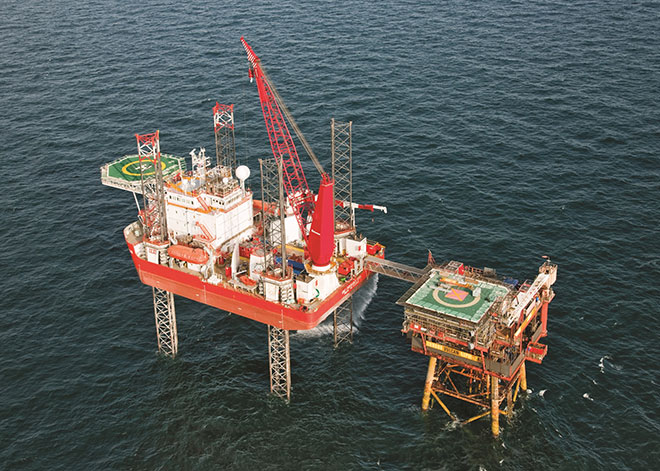Press Release
Newly-listed self-propelled jackup vessel operator GMS sets its sights on Asia
Gulf Marine Services (GMS), one of the largest providers of self-propelled self-elevating support vessels (SESVs) in the world, announced today at OTC Asia, Kuala Lumpur, that it will bring a fleet to South East Asia, with this a new offshore solution for the region.

GMS, which successfully had a premium listing on the London Stock Exchange earlier this month (March), recently established an office in Singapore as part of a strategic expansion plan, and has offices in the United Arab Emirates, Saudi Arabia and the United Kingdom.
The company operates a fleet of nine SESVs (also known as self-propelled jackup barges/rigs) which is technically advanced and amongst the youngest in the industry, with an average age of nine years compared to 16 years for its peers. GMS builds its vessels at its yard in Abu Dhabi and is building six more vessels over the next three years.
The SESVs have four legs, a design pioneered by GMS in 1982, a large deck space, crane capacity and accommodation facilities. They provide the stable platform for delivery of a wide range of services throughout the total lifecycle of offshore oil, gas and renewable energy activities for leading international blue chip clients. These services include enhanced oil recovery, platform refurbishment and maintenance, well intervention work and wind farm construction and maintenance.
GMS provides the vessels and the associated operational support, which includes the crew, accommodation and ‘hotel’ services for its clients. Since GMS is both builder and operator, it can tailor the self-propelled jackups to its clients’ requirements, offering flexibility and the reliability of a company with a track record of 37 years of successful operations. This level of offshore support and operational capability is not currently available in South East Asia.
 Duncan Anderson, chief executive officer at GMS, says: “The four-legged self-propelled offshore support vessel concept is not widely used in Asia; a floating barge, without propulsion, is more common. When the weather takes a turn for the worse, these vessels have to take cover, operations cease and the inevitable delays can be costly for the client. Our vessels, by contrast, can cope with very demanding conditions and since they don’t require anchor handling or tug support they can be mobilised much faster than conventional jackups.
Duncan Anderson, chief executive officer at GMS, says: “The four-legged self-propelled offshore support vessel concept is not widely used in Asia; a floating barge, without propulsion, is more common. When the weather takes a turn for the worse, these vessels have to take cover, operations cease and the inevitable delays can be costly for the client. Our vessels, by contrast, can cope with very demanding conditions and since they don’t require anchor handling or tug support they can be mobilised much faster than conventional jackups.
“The weather window for GMS’ vessels to move-infield is around three hours; for a conventional non-propelled jackup or floating barge it is an average of three days. The company’s E-Class and S-Class units also have dynamic positioning (DP2), affording efficient, high accuracy positioning alongside a platform. This provides huge advantages to our customers through a significant reduction in non-productive time. Our vessels also provide a stable platform for down hole well intervention activities using wireline and coil tubing.”
Currently under construction is the company’s third E-Class vessel, GMS Enterprise. This is capable of working in water depths of up to 80 meters, has a 400 tonne main crane, can travel at eight knots and accommodate 150 people (this can be increased to 300 depending on deck configuration). This vessel will be ready for new contracts in quarter three, 2014.
Work is also underway on a new addition to the GMS fleet, the S-Class, which is a smaller and more utilitarian harsh weather vessel than the E-Class. The first, GMS Shamal, will operate in depths of up to 55 meters, have a 150 tonne main crane, a speed of seven knots and accommodation for 150 people (which can be extended to 300). This vessel is scheduled for delivery in quarter two, 2015.
The company also operates a K-Class of SESVs. These operate in depths of up to 45 meters, have a 46 tonne main crane, can travel at four knots and accommodate 150 people (which can be extended to 300).
Mr Anderson adds: “All three classes of our multi-purpose harsh weather jackup vessels are suited for waters in South East Asia, with these offering our clients a new, flexible and cost-effective offshore solution.”